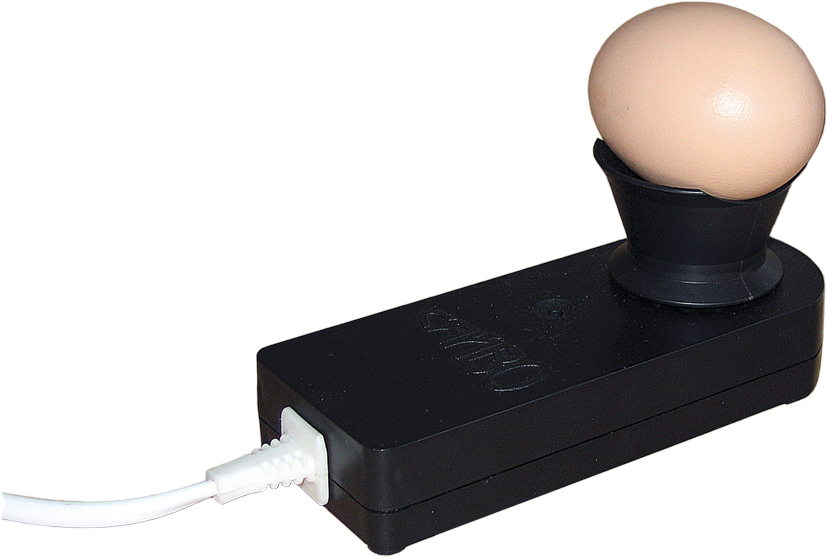Looking inside the egg
Ovoscope: A beam of light passing through the
egg without breaking it, being able to see what happens inside. Just highlight
the following categories:
|
INFERTILE |
UNEMBRYONATED EGGS |
|
DEAD |
TOP OF INCUBATION. |
|
DEAD |
TOWARDS THE END OF THE UNCUBACION. |
|
VIABLE EGGS |
|

Ovoscope
These categories are needed to then build the indexes that will indicate whether it was successful or not and eventually determine possible causes of the deaths.
The observation is aimed at detecting unfertilized eggs or early dead embryos. These eggs are removed to avoid excessive evaporation of water and a source of contamination.
The observation is performed on day 7 of incubation avoiding the effects of a sudden temperature change, taking all possible precautions. Usually for observation an ovoscope is applied.
It may happen that eggs are incubated and that after all caregiving no chick is born since the eggs were not fertile. To avoid this it is necessary to examine the eggs. You will need an ovoscope, a small box equipped with electric light or of any other type. Putting the egg against the light (or against sunlight) can discover whether the development is appropriate.
You need to check the eggs:
- Before placing them in the incubator.
- Seven days later.
- On day 18 of the incubation period.
Puede suceder que se pongan a incubar huevos y que después de todos los cuidados prestados no nazca ningún pollito porque los huevos no eran fértiles. Para evitar que esto suceda es necesario examinar los huevos. Para ello necesitará de un ovoscopio, una caja pequeña dotada de luz eléctrica o de otro tipo. Poniendo el huevo frente a la luz (o frente a la luz solar) podrá descubrir si el desarrollo es el adecuado.
Es necesario comprobar los huevos:
- Antes de colocarlos en la incubadora.
- Siete días después.
- El día 18 del periodo de incubación.
Observation during incubation:
(1) No sign of development = infertile egg.
(2) Fertile with blood vessels.
(3) red or black stain = died early.
(4) Embryo with red ring = died early.
(5) Live embryo with the peak in the air chamber = hatching within 48 hours.
(6) Normal evolution of the air chamber taking into account the days of incubation.
